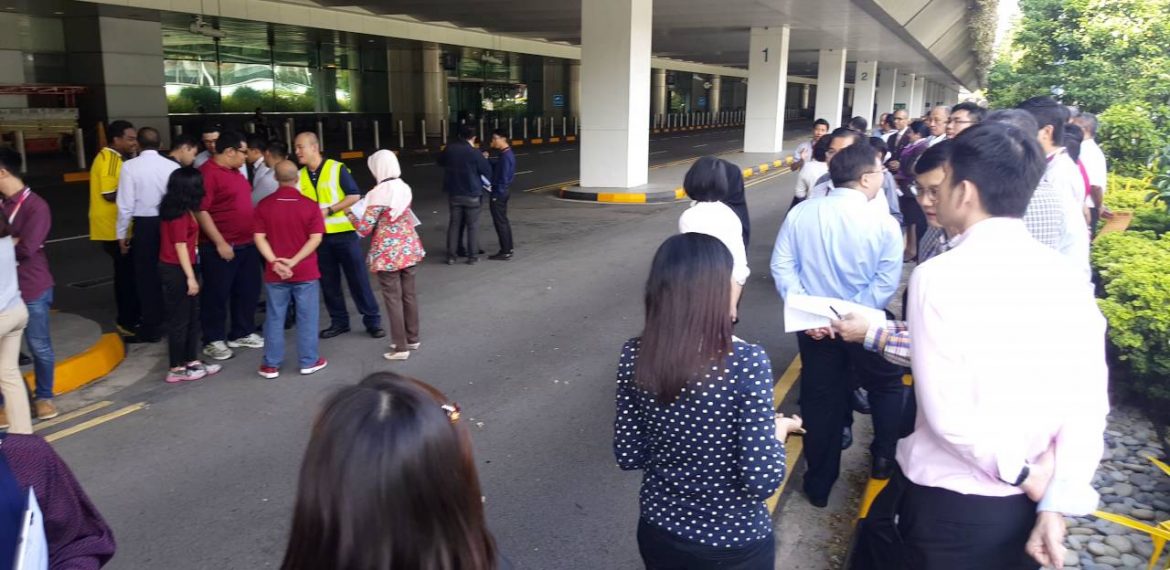Emergency in Airports
How is an Airport building Evacuation carried on?
Airports and airplanes are always been synonymous of vacations and far away places. For someone they are also tied to job journeys. However, let us imagine that something happens while you are waiting at the terminal. You hear an alarm. There is a fire inside the building. Evacuation is the only thing to do.
But how is an evacuation planned? Which are the safety procedures? What kind of devices have to be used?
In occasion of the Emergency Management for Airports Summit 2017 in London, Gerry Keogh, Chief Airport Fire Officer at the Dublin Airport Authority, explains how his crew would act during an airport evacuation.
- A fire occurs inside the airport building. What are the main precautions to take?
“The first key point is the security of the physical building. Often airport buildings are dividend into two or more floors. The landside, where most members of the public come in, go to the shop, have a cup of coffee and so on, then, the airside where people generally go to airstrips and dispose of restricted spaces. So in a brief comparison, the airside presents more difficulties than landside. We have a system that we evacuate latterly from the point of danger. Because the terminal generally are quite large and complex buildings. So life safety system and fire alarm systems will be zoned. If we have a fire alarm in a zone, we can evacuate in the next zone rapidly. If they are already on the airside we trying to keep them there rather than take them into the landside again, because we should take them to another safe zone again. Indeed, evacuating terminals and airsides is the most difficult one, because many times there are too many people crowded to evacuate and it becomes very complicated.”
- Is there any difference in evacuating an aircraft and a building?
“They are kindly different. Aircrafts evacuation comes from ICAO which is the international civil aviation organization from firefighting and rescue point of view standards, and in case of Dublin, the aircraft evacuation must comply with the ICAO standards (annex 14), which are mandatory. From the terminal building side, they just follow the local fire service laws of the country that you’re in. In Ireland we have the Fire Services Act and fire safety and evacuation procedures becomes from it.”
aviation organization from firefighting and rescue point of view standards, and in case of Dublin, the aircraft evacuation must comply with the ICAO standards (annex 14), which are mandatory. From the terminal building side, they just follow the local fire service laws of the country that you’re in. In Ireland we have the Fire Services Act and fire safety and evacuation procedures becomes from it.”
- In case of a terroristic attack, how do you act?
 “For the terroristic attack point of view, we generally use the protocol of security forces. In particular, the issue is: we generally do not evacuate people from the critical area to another ‘safe’ area, because the zone believed to be safe, can be put under attack too. The most dangerous aspect is that terrorists tend to have secondary target in order to hit most people they can. This is why evacuation in terroristic attacks is considered even more dangerous. So security forces evaluate the threat, and in case they believe that airport or nearby areas are not dangerous, we proceed to the evacuation.”
“For the terroristic attack point of view, we generally use the protocol of security forces. In particular, the issue is: we generally do not evacuate people from the critical area to another ‘safe’ area, because the zone believed to be safe, can be put under attack too. The most dangerous aspect is that terrorists tend to have secondary target in order to hit most people they can. This is why evacuation in terroristic attacks is considered even more dangerous. So security forces evaluate the threat, and in case they believe that airport or nearby areas are not dangerous, we proceed to the evacuation.”
- Let us talk about people with reduce mobility: are there specific procedures for their evacuation? And what type of devices are required to help them?
“In our terminal buildings we have some ‘safe refuge areas’ for people with reduced mobility located nearby the lifts or protected stairways for instance, where you can leave people in wheelchairs and be sure they could be safe. In particular, in case of evacuation from stairs, we dispose of evacuation chairs. They are the most accessible mean to move disabled or elderly people and take them to safe refuge areas quickly. Indeed, it often happens that lifts do not work and people need to go downstairs anyway. Usually, we have a company which takes care about mobility of disabled people and in case of emergency, they look after them. Regarding evacuation chairs, normally they are near the elevators or stairs for the same reason of before. Evacuation chiars are more easy to use for the operator, and in case the person has a wheel chair, we carry it separatly. So in case of a major fire alarm, we are ready to protect people with mobility difficulties.”
Evacuation is synonymus of safety. As Gerry Keogh affirmed again, “we evacuate if we believe it is safer for anybody.”
Officer Keogh will be speaking in a keynote at the annual Emergency Management for Airports Summit 2017 held in London, UK from 10-13 October 2017.
For a full list of the Conference Programme, visit http://bit.ly/2uz6bTD. Be sure to catch him live in person!
Want to know more about evacuation chairs? Click here


